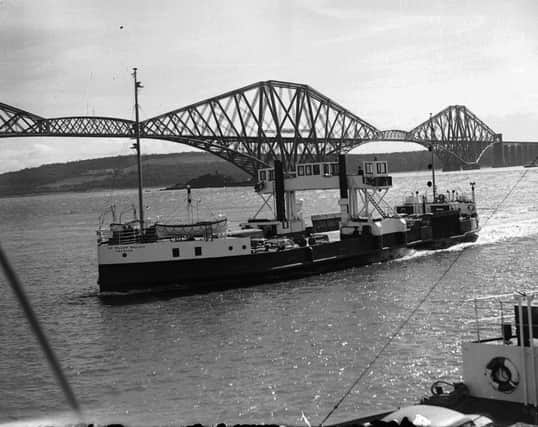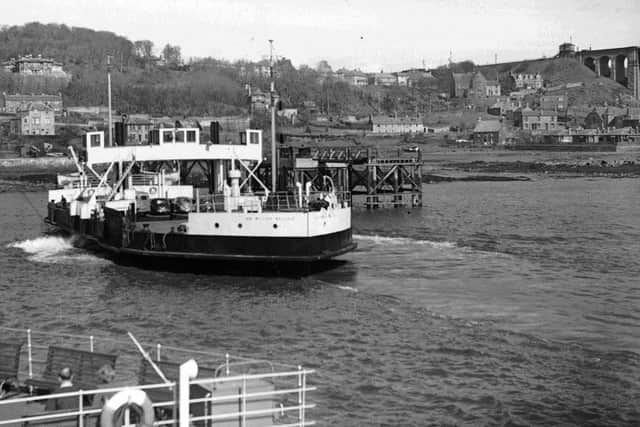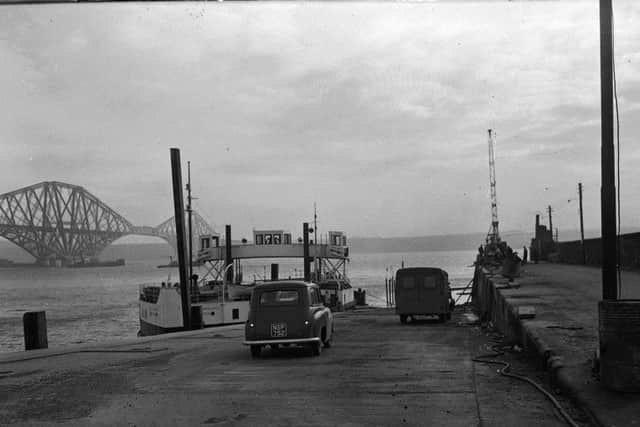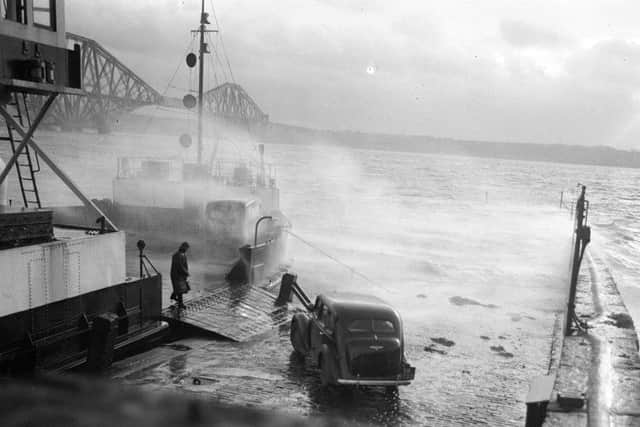The final years of the Queensferry Passage


But it was not so long ago that motorists looking to travel from Fife to Lothian and vice versa were required to make a short marine excursion.
The opening of the suspension bridge in September 1964 led to the closure of the Queensferry Passage, the ferry service that tradition dictates was established by St Margaret in the late 11th century.
Advertisement
Hide AdThe bridge opening marked the end of an era for residents in North and South Queensferry, communities which had been defined by the ferries for centuries and where many boatmen and their families still lived.


But few travellers were saddened by the passage’s demise at the time; it had long since reached breaking point. Four boats operating from 6am until 10pm could not keep up with demand. The queue of cars and vans stretched for miles on either side of the crossing at peak times.
By 1964 the ferries were making 40,000 trips a year and carrying 900,000 vehicles. The replacement bridge by comparison was crossed four million times in its first 12 months of operation alone.
Yet the distinctive black-and-white ferry boats are still fondly recalled by those old enough to have sailed on them.
The Queensferry Passage underwent a modernisation programme in the 1930s when it was taken over by William Denny & Brothers Ltd, a Dumbarton firm of shipbuilders.


Owner Maurice Denny saw the passage as a business opportunity; as passenger numbers rose, his firm would provide the ferries required.
Advertisement
Hide AdThe ferry service had previously been deemed surplus to requirements when the Forth Bridge opened in 1890. Railways were then viewed as the future.
A skeleton boat service was continued by the London & North Eastern Railway, but it was little used until private car ownership began to rise in the 1920s.
Advertisement
Hide AdTwo custom-built ferries, the Queen Margaret and the Robert the Bruce, were launched in 1934. Each could carry 500 passengers and 28 cars.


They were technically advanced for the time, with diesel-electric engines and rudders at either end to ensure there was no need for the boats to be turned before disembarking.
The ferries had a draught of just 4ft 6” to deal with the notoriously low tides at North and South Queensferry, but this could cause them to occasionally be blown off course when docking in high winds.
Passenger numbers continued to grow. The opening of the Kincardine road bridge in 1936, 15 miles upstream, did not dent the ever-increasing numbers queuing at Hawes Pier in South Queensferry or the Railway Pier across the water.
Two new ferries were added to the fleet in response. The Mary Queen of Scots in 1949, and the Sir William Wallace in 1956.
The latter vessel could handle 40 cars as well as 500 passengers, but by 1964 this was still woefully inadequate. Any sense of timetabling on the crossing was abandoned - when the boats were full, they left. Turnaround at the piers between services could be as quick as ten minutes.
Advertisement
Hide AdThese improvements did not stop the calls for a road bridge to be built. The outbreak of war in 1939 gave the passage only a temporary stay of execution.
A revised plan for a new crossing was finally signed off in 1958 and construction began that same year.
Advertisement
Hide Ad“Now that construction of the new Forth Road Bridge is proceeding, the Queensferry Passage can have only a limited life,” a company promotional leaflet issued by William Denny stated. “But no effort is being spared to maintain, and wherever possible, improve the service offered to the travelling public during the remaining years of operation.”
William Denny entered voluntary liquidation in 1963. The ferries passed into ownership of administrators until the bridge was completed.
Three of the vessels were scrapped in 1965, while the Sir William Wallace was sold to a Belgian firm to carry freight on the Lowland waterways. The last of the ferry boats was scrapped in 1970.